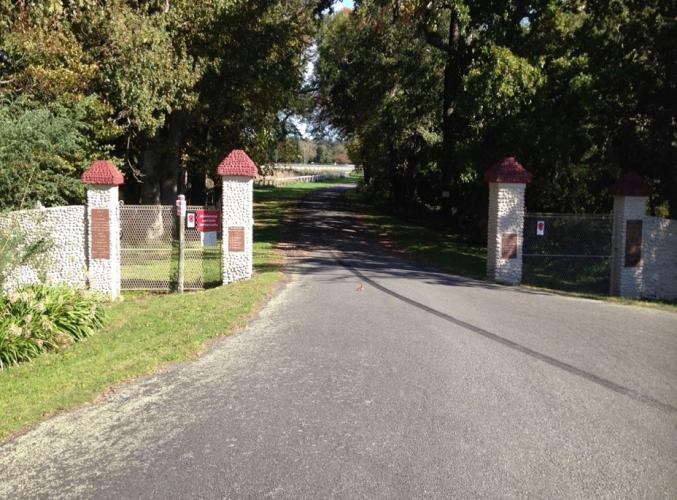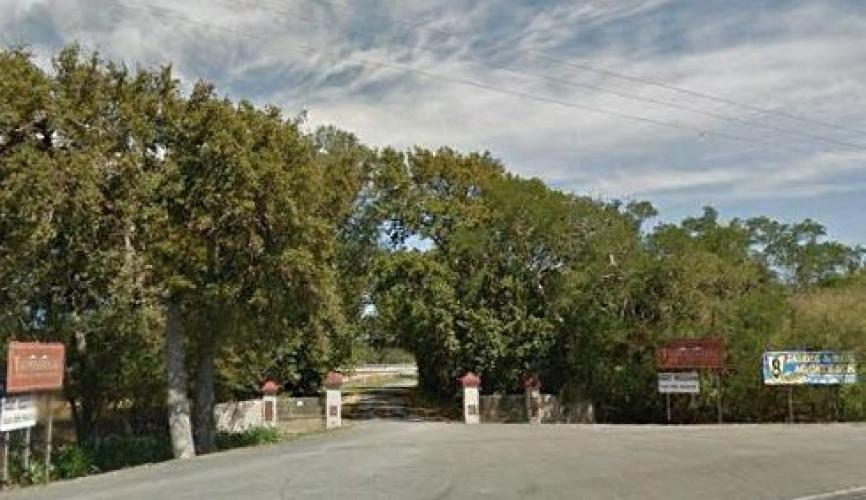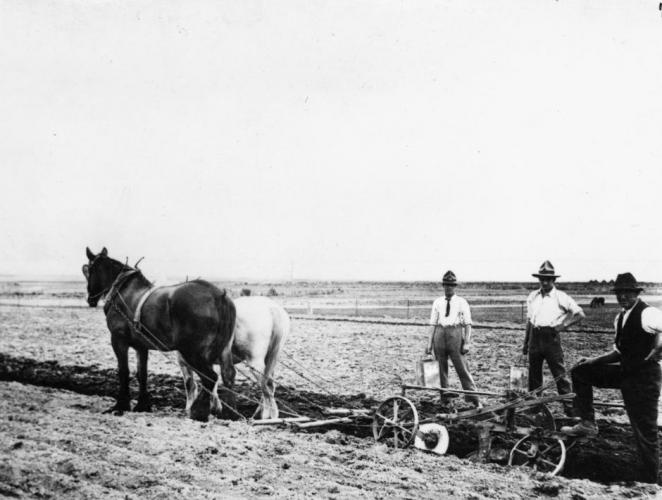140 Tauherenikau Racecourse Featherston, front gates 2018
Reason for the name
This racecourse was a convalescent hospital for soldiers from WW1 It is situated in 110 acres of beautiful native bush, magnificent trees and peaceful surroundings with a backdrop of the magnificent Tararua ranges. It was an ideal place for recovering wounded soldiers and was next door to the large Featherston Military Camp. From 1919 until 1922, the Repatriation Department operated a training farm for returned servicemen with respiratory illnesses on the site of the former Tauherenikau training camp.
Tauherenikau Camp served from August 1915 until 1923 in various guises - mostly seen as a stopgap until the Featherston Military Camp was ready for occupation. Originally set up among the manuka trees just noth of the Tauherenikau River bridge, the first occupants were mounted riflemen but infantry quickly followed. The men here always lived in tents and at times there were up to 4000 men in camp. Supplies had to be carted from Featherston. The first reinforcement marches over the Rimutaka Range departed from Tauherenikau. Occupation of this camp was not permanent once Featherston opened, trainees often spent a short time here before entering Featherston.
Author: The Poppy Places Trust
Tauherenikau Military Camp
Location: State Highway Two, between Featherston and Greytown
Although seen as a stopgap until Featherston Military Camp was ready for occupation, Tauherenikau served from August 1915 until 1923 in various guises. The original camp was set up among the manuka trees on Herbert Williams’ farm, just north of the Tauherenikau River bridge. The first occupants were mounted riflemen but infantry soon joined them.
The men always lived in tents at Tauherenikau and at times there were up to 4000 men in camp. There were few buildings at first and cooking was in outdoor field ovens. Supplies had to be carted from Featherston. The first reinforcement marches over the Rimutaka Range departed from Tauherenikau.
Camp occupation was not permanent after Featherston Camp opened. Trainees often spent a short time at Tauherenikau before entering Featherston. In the winter of 1917, a four-camp system operated to keep men from different districts isolated for a period to avoid contagion. In late 1917 a C.1 camp for unfit men was set up at Canvas Camp but this soon moved to Tauherenikau. A YMCA building, medical facility and a few other buildings were constructed, with a small isolation camp over the road. The Defence Department bought the farm in 1917 after Williams complained he could not work the land properly. A pig farm was set up and vegetables and fodder were grown. There was also a horse remount depot.
When the war ended, most of the buildings were removed quickly. In 1919 the Repatriation Department set up a training farm to help returned soldiers, suffering from tuberculosis or chest wounds, to learn light farming – market gardening, bee-keeping, poultry. The training farm closed in 1923.
Soon after setting up Tauherenikau Camp, the army began using the rifle range at Papawai for shooting courses. Training for machine gunners also took place, in posts along the bank of the nearby Ruamahanga River with targets across the river. A small subsidiary camp was established, catering for up to 500 in tents.
Papawai Camp was used by the Mounted Rifles, groups of which would be in residence for about a week. Small groups of specialist troops (engineers etc.) also used the camp. Infantry marched from Tauherenikau, and later Featherston, for a day’s shooting at Papawai, a round trip of about 20 km.
By 1917 there were some permanent buildings – headquarters, dining hall, small hospital, post office and a YMCA. The accommodation remained under canvas.
After the war the camp disappeared quickly while the rifle range continued to be used by rifle clubs.
In the winter of 1917 a four-camp system operated to separate men from different districts isolated for a period to avoid contagion. A YMCA, a medical facilty and a few other buildings were constructed with a small isolation camp across the road.
When the war ended most of the buildings were removed quickly. In 1919 the Repatriation Department set up a training farm to help returned soldiers, suffering from tuberculosis or chest wounds, to learn light farming - market gardening, bee-keeping, poulty. The training farm closed in 1923.






